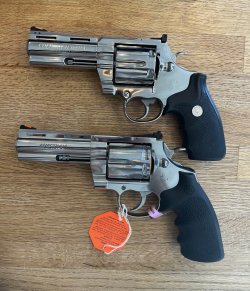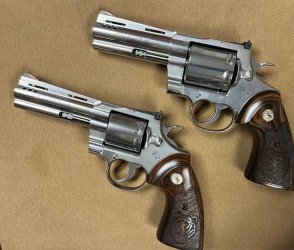I found the video fascinating. I thought the information on using "proof ammo" in every revolver very interesting. So each of the new Pythons are actually fired at least 12 times assuming no problems. How would you like to be the lady that gets to shoot every Python manufactured for a job? Can you imagine being her at a party? "Hey Virginia what do you do for a living?" "I shoot Colt Pythons for a living!"
I guess during the manufacturing of the original Pythons, there were a couple more steps to the test firing. Back then each one came with its own test fired target. Setting up and shooting paper targets for every gun would be pretty time consuming! I personally would like to have seen how that was done.
Larry
I guess during the manufacturing of the original Pythons, there were a couple more steps to the test firing. Back then each one came with its own test fired target. Setting up and shooting paper targets for every gun would be pretty time consuming! I personally would like to have seen how that was done.
Larry


